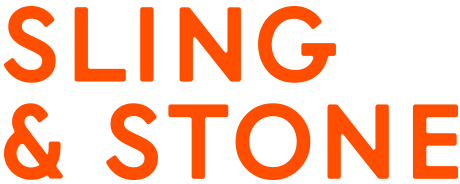
We’re facing the toughest health and economic challenges of our lives, and it’s difficult to know how to communicate during these times. Whether it’s your staff, customers, partners, or other stakeholders, it’s likely things have changed or are changing.
There is no single blueprint anyone is following. If you see someone you think has their shit together, there’s a good chance they’re just as confused as you are.
But there are some principles you can apply to how you communicate sensitively during these next few weeks and months. I’ve found these helpful as I’ve navigated this change in recent weeks and thought you may too.
Mitigate risk by getting multiple viewpoints
Do not try and solve the problems you are facing in isolation. This is always true, but especially so in a crisis.
I have never seen business leaders, entrepreneurs, and advisers band together like they have in the face of COVID-19. Every person I’ve reached out to for help these past few weeks — even those I’ve never spoken to — has responded almost immediately.
Every time I’ve been close to making a comms mistake, talking to someone about it beforehand has stopped me. Making major business changes or announcements without talking to someone first? That’s a sure fire way to screw up.
No one can see their own blind spots and right now excellent comms demands sensitivity, empathy, and a real awareness of how the health crisis is affecting different lives in different ways. Getting multiple points of view is crucial to getting that balance right.
This is a simple and obvious de-risking strategy, with little to no cost. Pick up the phone, send that email, or shoot a quick text to the people in your industry you admire and respect. Don’t rely on your own assumptions about how something might be construed or read — get a second (or even third) perspective about your intentions and how to best communicate them.
They will help you out.
Principles should guide your crisis response
A friend who runs a great digital agency told me the way he was navigating all of the challenges in front of him was pretty simple:
First, figure out the principles that are important for you.
Then, make your decisions.
This is incredibly important right now as you will likely be making critical choices on a daily basis and it’s your principles that will guide you down route A or route B.
For some business owners, the first principle through this crisis is ensuring they make zero redundancies, with less of a focus on short-term profitability. Figuring that out helps make the decisions that follow much more logical.
But if your first principle is the survival of the business at all costs, or short-term cash generation, your decisions may be different.
It’s a common mistake to make decisions (or write communications) then figure out how that fits your world view. Decide it up front, and be clear about it with the people around you (it will probably result in deeper, more considered feedback from your peers).
Double down on your internal comms
The social distancing and isolation we’re all experiencing is weird. For many it’s both physically and mentally draining. It’s easy to go into your shell and stop communicating — whether that’s deliberate or not.
Now is not the time to stop communicating. Your customers, your staff, your colleagues, your partners — they need to hear from you more than ever.
Those little day-to-day interactions around the office, at events, or in meetings that you no longer have? They may have seemed innocuous, but they’re the fibre that creates culture, and they build the camaraderie that leads to great work. With the move to remote, many of those are gone, and it’s up to you to fill in that gap.
Your people need to hear from you — not just on Slack or email. They need to see you too. Sending a written memo is not always enough. Deliver both the good and the bad news live on videoconference. Don’t shy away. And be mindful of your tone when writing updates for your team. In the absence of reading your body language or facial expressions, many people tend to read the written word in situations like this with more neutrality or negativity than you may have intended.
With the shift to digital — whether that’s videoconferencing or text — internal comms and employee engagement is at the top of the pile now for everyone. Tell your team when you will communicate to them, don’t leave them guessing when the next update is. Don’t forget about it as you navigate this crisis.
If you haven’t been thinking about internal communications, it’s time to start.
And just remember, if you screw this up, internal comms doesn’t always stay internal. I know you are having to move quickly with this, but do not shoot from the hip. A certain high-growth company was either being motivated by legal advice or convenience when it decided to fire hundreds of people via a pre-recorded video message.News quickly got out.
It’s time to put more attention and care into your internal comms.
This is not the time for sh*t stirring
We’ve been working with entrepreneurs, challenger brands, and disrupters for ten years. Many of them are shit-stirrers. We love getting in the ring with them and ruffling a few feathers.
Normally, the David vs Goliath-type conflict gets the attention and interest of the people you want to reach. It’s an enthralling narrative to tell and follow. But it’s not the time for that. Now, people want and need hope.
Please don’t fake your optimism. But if you do have a story that might inject people with a bit of joy, hope, or a stronger sense of community… now is the time to tell it.
Crisis and constraint can foster creativity
Every business that’s still in business has a story to tell.
There aren’t many positives to take out of the situation we’re all in together. But one change that is happening is that more content is being consumed than ever before. Across owned channels, media, and social networks, attention is skyrocketing.
Don’t talk for the sake of it, but figure out your place in the world. Whether that’s today, as the recovery begins, or as we all start rebuilding together.
It might not be the exact same message as before, or the same channels, but your story still matters to people. We’re seeing some of the best creativity in years come to the fore. My favourite example of this is stage management company Stagekings, very quickly pivoting to making desks so more people can be comfortable working remotely. A big and quick business pivot, with an incredible story to tell (I’m writing this from their aptly named Isolation desk). Constraint can be a frustration, or it can be an opportunity.
But your sales messages must change
Yes, we’ve all seen some off-colour sales messages already during this crisis. But before publicly denouncing these people, remember that everyone has mouths to feed. Everyone is in survival mode, which means generating and keeping cash is king. Sales and marketing still have to happen. But the messages have to change. If you’re selling something essential, your tone must be different to what it was prior to this. And it absolutely can’t seem opportunistic.
If you’re in a non-essential category, the key thing to avoid is desperation. Your customers can smell it a mile away.
Follow the golden “front cover” rule
There are tough decisions ahead for all of us. Maybe some of them are already in the rear view mirror for you. I think Warren Buffet’s newspaper test is the best way to quickly figure out if what you’re doing is right.
If you’re unsure whether a decision or action is the right one, imagine it was on the front cover of your local newspaper the next day. It will quickly bring to light how you feel about what you’re thinking of doing.
Or more importantly for us all, imagine your decision is splashed all over the most important trade media outlet that covers your industry. Would you have egg on your face, or would you be proud?
This may not be avoidable in times of crisis, I get it. Hard and fast decisions need to be made. But this is a value that is very important to me and it’s guided me towards the most ethical decisions in my career.
Your team doesn’t want to hear from a corporate robot
You might have seen the eruption of memes about how our usual email niceties seem wrong in a world on lockdown. Wishing someone a ‘great weekend’ or ‘hoping they are safe and healthy’ before launching into regular work chat can be jarring.
This crisis has hit people in a very raw, human way and, if you want them to listen to you, your language should acknowledge that. Right now, you can’t get away with cliches and buzzwords (not that they’re ever advisable).
Here’s a test. Whatever you want to say to your partners, customers, or employees — pretend you were saying it to your mum. Or a 12-year-old kid.
If it sounds like bullshit to them, that’s how people listening to you will feel as well. The community does not have patience right now for buzzwords and hand-waving. Be crystal clear. Say it how it is.
Don’t pretend to be an expert on things you’re not. There are suddenly a lot of experts on epidemiology or remote work best practices. Where did they all come from?
Your people will respect you if you are very clear about what you can control, and what decisions you can make, while also being explicit about the things you can’t control. Don’t muddy the two, and don’t pretend or try to control what you can’t.
Be vulnerable (that’s how you make connections)
On that note — yes, you need to lead and communicate with clarity and consistency.
But it’s OK — actually better than OK — to show your human side. Talk openly about what’s been hard. I was sharing a company update to the entire agency recently, and while the news was positive and upbeat, it was certainly emotional. The response I got from Slingers around the world was nothing short of spectacular. It was hard (OK, impossible), to hide my gratitude, appreciation, and pride in our team in that moment.
I’ve spoken to some founders who are so scared of putting a foot wrong, they end up communicating in a way that is rigid and cold. I promise you, that rigidity will lead to people thinking you lack empathy. Too often leaders are taught or told to not show emotion. Even if that’s true some of the time, or most of the time, I don’t think it’s true right now.
Reach out in the weeks and months ahead
To my first point, if you ever want to pick up the phone and chat, please do. We are here to help. You can reach me at [email protected].
Vuki Vujasinovic,
Founder & CEO,
Sling & Stone

